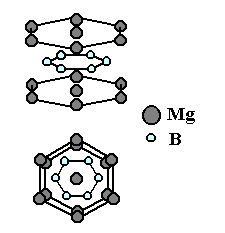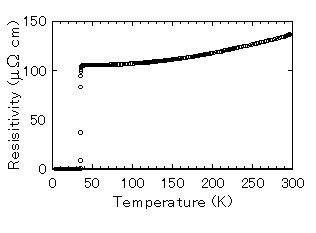Materials Science Laboratory
@The recent discovery of superconductivity at 39 K in MgB2
[1] has generated great interest in both basic science and practical applications.
MgB2 has the highest superconducting transition temperature
(Tc) among non-oxide materials and its Tc is close to that of
La2-xBax(or Srx)CuO4,
which were the first high- Tc superconductors. The Tc is slightly
higher than the theoretical upper limit predicted for phonon-mediated superconductivity,
which had been widely accepted until the discovery of superconducting cuprates.
Therefore it is important to clarify the superconducting pairing mechanism
of MgB2, for which tunneling spectroscopy on the clean
surface of thin films of MgB2 should provide the most
definite evidence. With a view to superconducting electronics applications,
the thin film form of MgB2 is also required. MgB2
is a promising material for preparing Josephson junctions because it has a
simpler crystal structure, fewer material complexities, and a longer coherence
length (` 5 nm) than cuprates in spite of its lower Tc. This scientific
and practical interest triggered intensive efforts to prepare high-quality
thin films of MgB2.
@The preparation of thin films of this rather simple intermetallic compound
is impeded by the large difference between the vapor pressures of Mg and B.
Therefore, most initial efforts employed the "two-step synthesis" in which
amorphous B or Mg-B composite precursors are annealed at elevated temperatures
with excess Mg in a sealed tube. However, this method is unsuitable for the
fabrication of Josephson junctions or multilayers [2]. We used a different
approach to avoid this problem and have recently succeeded in preparing the
first ever as-grown MgB2 films by using molecular beam
epitaxy [3]. This success was achieved by reducing the growth temperature
to as low as 300. The Tc is 35 K, which is close to the Tc
of bulk MgB2. The in-situ growth of MgB2
films should enable substantial progress to be made toward the fabrication
of Josephson junctions.
[1] J. Nagamatsu et al., Nature 410 (2000) 63.
[2] K. Ueda, M. Naito, Studies of High Temperature Superconductors, in press.
[3] K. Ueda, M. Naito, Appl. Phys. Lett. 79 (2001) 2046.
 |
 |
||||
|
|